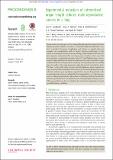Files in this item
Experimental reduction of intromittent organ length reduces male reproductive success in a bug
Item metadata
| dc.contributor.author | Dougherty, Liam R. | |
| dc.contributor.author | Rahman, Imran A. | |
| dc.contributor.author | Burdfield-Steel, Emily R. | |
| dc.contributor.author | Greenway, E. V. (Ginny) | |
| dc.contributor.author | Shuker, David M. | |
| dc.date.accessioned | 2015-09-16T10:10:01Z | |
| dc.date.available | 2015-09-16T10:10:01Z | |
| dc.date.issued | 2015-06-07 | |
| dc.identifier | 195603126 | |
| dc.identifier | 93d3e8c4-65f6-4c62-9de2-6f8aa0c20ad0 | |
| dc.identifier | 84929327719 | |
| dc.identifier | 000357060800021 | |
| dc.identifier.citation | Dougherty , L R , Rahman , I A , Burdfield-Steel , E R , Greenway , E V & Shuker , D M 2015 , ' Experimental reduction of intromittent organ length reduces male reproductive success in a bug ' , Proceedings of the Royal Society B: Biological Sciences , vol. 282 , no. 1808 , 20150724 . https://doi.org/10.1098/rspb.2015.0724 | en |
| dc.identifier.issn | 0962-8452 | |
| dc.identifier.uri | https://hdl.handle.net/10023/7478 | |
| dc.description | This work was funded by the Natural Environment Research Council DTG PHD studentships to L.R.D., E.R.B.-S. and E.V.G., and an 1851 Royal Commission Research Fellowship to I.A.R. | en |
| dc.description.abstract | It is now clear in many species that male and female genital evolution has been shaped by sexual selection. However, it has historically been difficult to confirm correlations between morphology and fitness, as genital traits are complex and manipulation tends to impair function significantly. In this study,we investigate the functional morphology of the elongate male intromittent organ (or processus) of the seed bug Lygaeus simulans, in two ways. We first use micro-computed tomography (micro-CT) and flash-freezing to reconstruct in high resolution the interaction between the male intromittent organ and the female internal reproductive anatomy during mating.We successfully trace the path of the male processus inside the female reproductive tract. We then confirm that male processus length influences sperm transfer by experimental ablation and show that males with shortened processi have significantly reduced post-copulatory reproductive success. Importantly, male insemination function is not affected by this manipulation per se. We thus present rare, direct experimental evidence that an internal genital trait functions to increase reproductive success and show that, with appropriate staining, micro- CT is an excellent tool for investigating the functional morphology of insect genitalia during copulation. | |
| dc.format.extent | 8 | |
| dc.format.extent | 637793 | |
| dc.language.iso | eng | |
| dc.relation.ispartof | Proceedings of the Royal Society B: Biological Sciences | en |
| dc.subject | Genital evolution | en |
| dc.subject | Genital ablation | en |
| dc.subject | Micro-computed tomography | en |
| dc.subject | Post-copulatory | en |
| dc.subject | Cryptic female choice | en |
| dc.subject | Functional morphology | en |
| dc.subject | QH301 Biology | en |
| dc.subject | BDC | en |
| dc.subject | R2C | en |
| dc.subject.lcc | QH301 | en |
| dc.title | Experimental reduction of intromittent organ length reduces male reproductive success in a bug | en |
| dc.type | Journal article | en |
| dc.contributor.institution | University of St Andrews. School of Biology | en |
| dc.contributor.institution | University of St Andrews. Centre for Biological Diversity | en |
| dc.contributor.institution | University of St Andrews. Institute of Behavioural and Neural Sciences | en |
| dc.contributor.institution | University of St Andrews. Scottish Oceans Institute | en |
| dc.identifier.doi | 10.1098/rspb.2015.0724 | |
| dc.description.status | Peer reviewed | en |
This item appears in the following Collection(s)
Items in the St Andrews Research Repository are protected by copyright, with all rights reserved, unless otherwise indicated.

